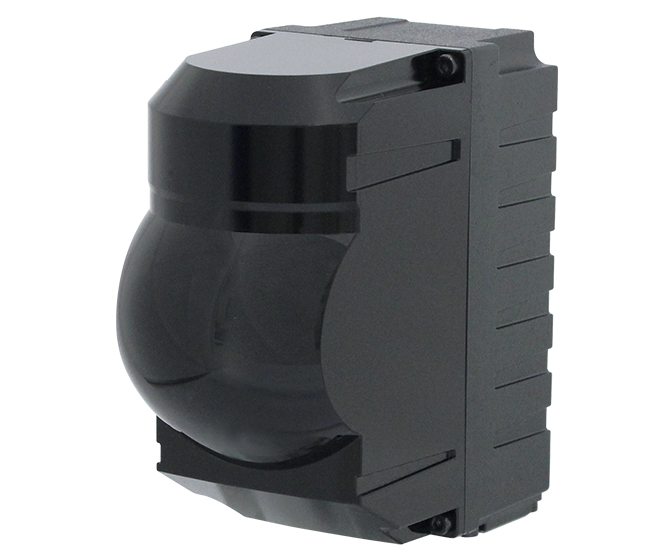The operation of autonomous vehicles, robots, and cranes in outdoor settings is challenging as well as complex because of changing weather conditions. Rain, dust, snow, fog, hailstorms, and airborne particulates introduce optical scattering, absorption, and false returns that affect LiDAR sensor performance.
The tiny dust particles and droplets create spurious reflections, lower the signal-to-noise ratio (SNR), and alter measured intensities. These harsh conditions also cause LiDARs to produce ghost points because of multi-path reflections. This leads to noisy point clouds and incorrect range estimates, which becomes problematic in 3D mapping or obstacle detection.
To solve these issues of incorrect data collection, Hokuyo has developed 3D LiDAR sensors with built in spatial filtering capabilities. Let’s explore what spatial filtering in LiDAR is and its benefits in different conditions.
Significance of 3D LiDAR Sensors in Harsh Environments

3D LiDAR makes a rich point cloud that shows height, width, and depth, so the machine can map its space and spot obstacles. Some sensors have multi-echo return, which helps differentiate between thin weather particles and solid objects. Additionally, 3D sensor units have a rugged build quality specifically to be deployed on machines that are used outdoors.
What is Spatial Filtering in 3D LiDAR Sensors?
3D LiDAR sensors are crucial in harsh conditions for better detection, leading to accurate machine operations. But when the intensity of dust, rain, or fog increases, some sensors can produce incorrect data.
To reduce such inconsistencies, LiDAR sensors are now equipped with spatial filtering, which is a way of removing random fluctuations (due to particles) from the intensity profile of the laser beams. The particles in the air can cause lasers to experience intensity variations.
A spatial filter focuses the laser through a lens and places a small aperture at the focal plane to pass the desired core of the beam. During this, the aperture blocks the high-spatial-frequency content that appears as speckle or ripple, thereby smoothing the intensity profile and improving beam quality.
Benefits of 3D LiDAR with Spatial Filtering
The 3D LiDAR can produce extreme results when used on machines working autonomously in outdoor environments. The sensors improve their performance and also make them safe around the human workforce, as they help machines detect objects accurately even in dense air particle conditions.


When using 3D LiDAR sensors with spatial filtering capability, the autonomous vehicle can operate with greater accuracy, as the quality of the beam can’t be compromised because of air particles. Spatial filtering removes high-spatial-frequency disturbances in the emitted or received beam, which allows for a smoother and more coherent beam profile.
Further, a cleaner laser beam increases the fraction of energy returned from true surfaces and raises the effective signal-to-noise (SNR). This improves the range estimates in low-visibility conditions drastically.


Optical spatial filters block scattered and off-axis light that creates speckles and unwanted echoes. By cutting the spatial content that corresponds to diffuse atmospheric scattering, spatial filtering reduces early/late false returns and multi-path ghost points in the point cloud.


A stabilized intensity profile makes time-of-flight centroiding and return-strength measurements more solid. With less amplitude variation from speckle and scattering, the distance estimated clusters more tightly around the true surface returns. This improves point-cloud geometry and surface completeness for mapping and obstacle profiling.


The spatial filtering provides sensors the capabilities to differentiate between low-confidence, high-frequency returns and coherent reflections from solid objects more accurately. Additionally, when combined with intensity or multi-echo logic, this optical pre-filtering reduces the number of candidate noise points that algorithmic dust filters must consider, which improves classification precision.


Spatial filtering reduced the load on software denoisers and clustering filters by removing a swath of noise at the optical stage. That means fewer false positives to process, faster segmentation and tracking, and lower latency in safety loops.

Hokuyo’s YHT-05LA is an excellent example of a compact 3D LiDAR with spatial filtering technology that helps autonomous vehicles perform their job accurately. YHT-05LA also has object detection capabilities for above-and-below mounting coverage, making it versatile for use on any robot.
Plus, it has a 5-meter scan range, a 45° horizontal and 85° vertical field of view (FOV), and a 17.5 ms quick-scanning time. Its interlace function further allows for higher-resolution 3D point clouds for object profiling.
Choose Spatial Filtering Equipped 3D LiDAR Sensors for Accurate Outdoor Operations
Tractors, trucks, cranes, robots, UAVs, and many other autonomous vehicles are largely being deployed in outdoor settings to improve production rates. However, the productivity will only be improved when these autonomous vehicles work accurately in all kinds of conditions, including rain, heavy dust, or fog.
At Hokuyo, we research and develop 3D LiDAR sensors that address real-world problems that affect automation adoption. Our range of LiDAR sensors is equipped with the latest technology, so you can deploy autonomous robots with greater confidence. Our sensors make them smarter, efficient, productive, and safer.
Learn how 3D LiDAR sensors can fit into your company’s everyday operations.

 Factory Automation
Factory Automation Logistics Automation
Logistics Automation Process Automation
Process Automation Crane Collision Avoidance
Crane Collision Avoidance LiDAR/Obstacle Detection
LiDAR/Obstacle Detection Safety Laser Scanners
Safety Laser Scanners Optical Data Transmission
Optical Data Transmission Hot Metal Detectors
Hot Metal Detectors Laser Distance Sensor
Laser Distance Sensor Blog
Blog Whitepapers
Whitepapers Case Studies
Case Studies Infographics
Infographics